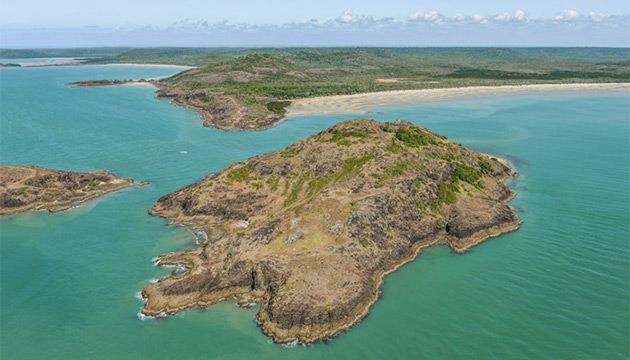Some 15,000 people live in the Cape York region, at the northernmost point of mainland Australia. Rising rivers can isolate them from the rest of Australia for months at a time, but they don’t mind a bit.
Story By Ken Eastwood
It’s no wonder the number of tourists coming to Cape York each year now more than doubles the resident population. As well as the wild, remote and isolated feel of the place, where even Telstra phone coverage is rare, it has some stunning locations. At Captain Billy Landing, a kaleidoscope of colour greets the traveller, with golden bouquets and green heath on red laterite cliffs, tropical aqua and greens merging through purple reefs to deep blues on the horizon, dark creamy sands, and the sparkling white parabolic dunes - 98% silica – of Shelburne Bay. In Kutini-Payamu (Iron Range) National Park, keen birdwatchers lurk in darkened pockets of rainforest looking for some of the sexiest birds in the country: eclectus parrots, cassowaries, red-bellied pittas, buff-breasted paradise-kingfishers and the highly intelligent palm cockatoos. Many of the animal species here are more commonly associated with Papua New Guinea, such as tree kangaroos and spotted cuscus, and 60% of the Australia’s butterfly species are found on the Cape.
World War II buffs travel through the region to find old heavy bomber airstrips, such as near Lockhart River, where 7000 American troops hid in the jungle, launching attacks in the war in the Pacific.
The most popular national park camping area on the Cape is Eliot Falls, which is one of a string of spectacular swimmable cascades, including Fruit Bat and Twin falls.
But pretty much every tourist keeps heading north, across the tiny Jardine River Ferry with its $100 return ticket, past Seisia and Bamaga, and towards the most northerly point on mainland Australia. Most stopover about 40 minutes short of the Tip, at Queensland’s 2015 Telstra Business of the Year, Punsand Bay. It has a large camping area, cabins, restaurant and a bar on a gorgeous long stretch of beach with views north to the Tip. The water is tantalisingly tempting, but with regular sightings of big crocs, guests don’t usually swim. “We occasionally swim here though,” owner and manager Rod Colquhoun says. “In the wet season we swim all the time – it’s crystal clear, and you can see everything.”
This Story is from Issue #103
Outback Magazine: Oct/Nov 2015










